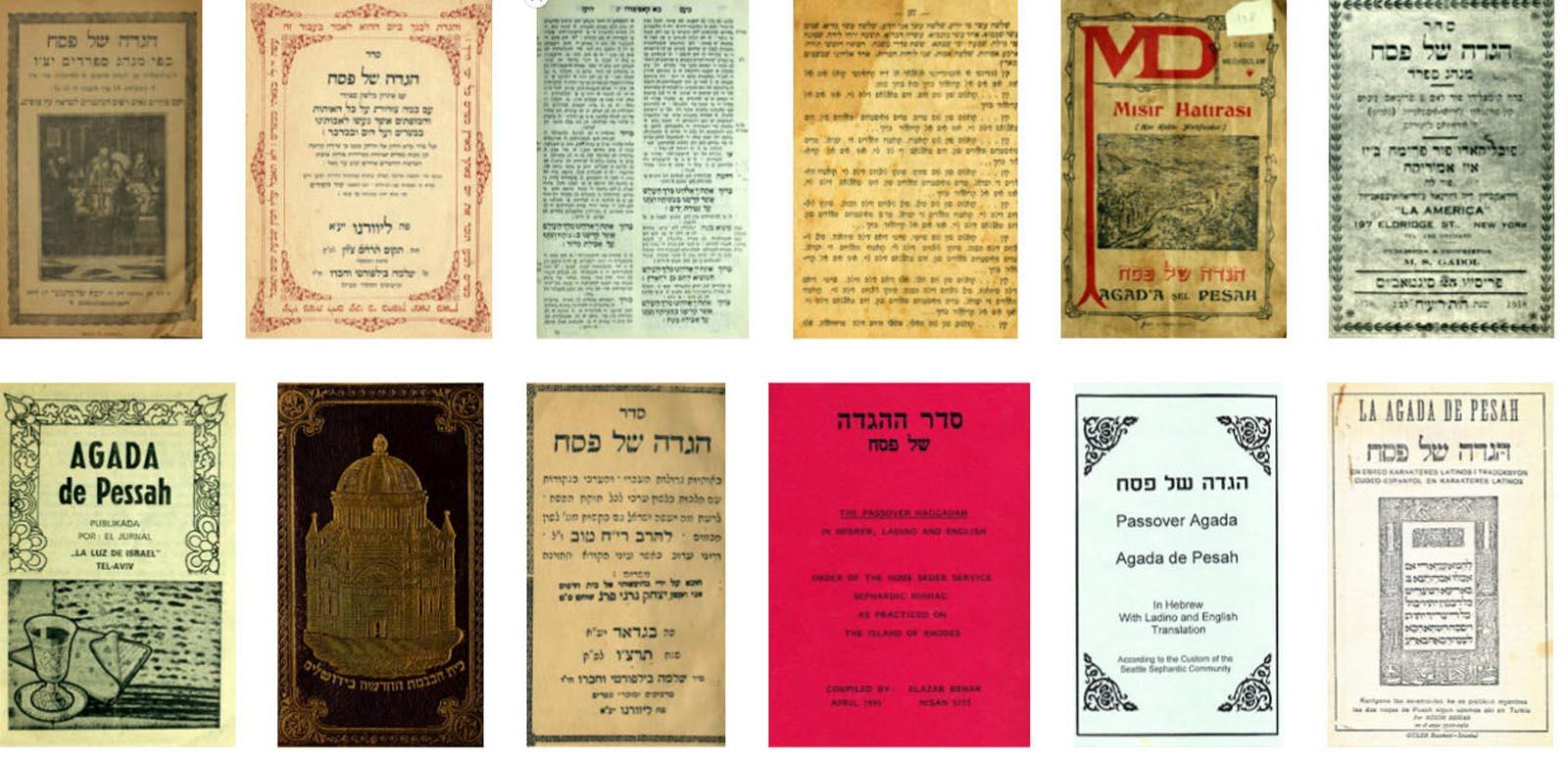“Who Knows One?” in Ladino: Songs at the Sephardic Passover Seder

For Rachel Shemarya (née Capelouto), a native of the Island of Rhodes, Passover provided an opportunity not only to share her delicious holiday recipes but also to transmit the Passover story and Sephardic songs in her native language, Ladino, to her family right here in the Pacific Northwest. While most of the Shemarya relatives who remained in Rhodes tragically perished in Auschwitz, those who came to the United States carried the tunes to their new home as documented here in a 1971 recording.
 Rachel Rahil Semarya
Rachel Rahil Semarya
Among the songs included in the Passover seder is “Ehad Mi Yodea” (Who knows one), a cumulative song that enumerates 13 Jewish motifs and ideas, from belief in one God to the 13 attributes of God’s mercy with references to the biblical matriarchs and patriarchs, foundational Jewish texts and lifecycle events along the way. Scholars surmise that this song was added to the concluding section of the Passover seder as a way to keep the attention of children while imparting Jewish knowledge to them. So it may seem odd that a comprehensive review of Sephardic Haggadot (the plural of Hagaddah)reveals that most do not contain the text of “Ehad Mi Yodea” either in Ladino translation or in the original Hebrew. Only two include it in the Ladino translation, known as Ken Supiense.
But the lack of printed versions of Ken Supiense did not stop the song from gaining popularity. We have many oral recordings of the song and quite remarkably, or maybe because the written text was very rare, there are many variations in the words and the melody.
All versions of “Ehad Mi Yodea,” whether in Hebrew or in Yiddish or Ladino translation, agree that, among the thirteen Jewish references enumerated in the song, one always refer to one God and five always refers to the five books of the Torah. But there are some major variations among the Ladino versions. For example, in oral recordings based on the Salonica and Rhodes traditions, the song includes a kind of redemptive, rhyming preamble half in Hebrew and half in Ladino: “Eleonu she-ba-shamayim, nos iremos a Yerushalayim, kon la karavana grande” (Our God in Heaven, we will go to Jerusalem with a great caravan [or perhaps pilgrimage]). This may be an allusion to the famous concluding wish of the Passover seder: “Next year in Jerusalem!”
Other variations abound. According to the Hebrew text, the number two represents the two tablets of the covenant that Moses received at Sinai, yet we find that most Sephardic communities replaced the reference to the tablets with the names of two of the great leaders in the Passover story, Moshe (Moses) and Aaron. In Rhodes and Salonica, the names of the Patriarchs Abraham, Yitzhak (Isaac) and Yaakov (Jacob) are added, as are the names of Matriarchs Sara, Rivka (Rebecca), Leah, Rachel (the latter of which conveniently rhymes with “madres de Yisrael”).
Perhaps one of the most intriguing differences can be discerned in the varied references in the final, 13th stanza of Ken Supiense. The Rhodesli and Turkish versions do not refer to the 13 attributes of God’s mercy as the original Hebrew text does, but rather to renowned medieval Spanish sage Rabbi Moses Maimonides’ 13 principles of Judaism that he outlined in his famed commentary on the Mishnah, and which are popularly known today from Sabbath hymns like “Yigdal” and “Adon Olam.”
Ken Supiense refers explicitly to one of Maimonides’ key concepts and signifies the transformation of a song of Ashkenazi origin into one with fundamentally Sephardic allusions. The reference also demonstrates that high ideas expressed in writing by Sephardic sages like Maimonides penetrated the collective consciousness of the Sephardic masses through oral tradition—evidence of the importance of taking into account written and oral traditions together.
The case of Salonika includes a completely different reference for the number 13 in Ken Supiense. (See the Salonican version of Ehad Mi Yodea recorded in 1982 by Dr. Susana Welch-Shahak, available here[beginning at minute 39:00], from the National Library of Israel). Rather than evoke the 13 attributes of God’s mercy or Maimonides 13 principles of Judaism, the Salonikan version departs considerably from the original Hebrew text and refers to “ermanos kon Dina”: Joseph and his 11 brothers who initiate the 12 tribes of Israel, plus their sister Dinah.
At this point, we can only speculate as to why Dinah is included here. Could her inclusion be interpreted as a kind of feminist gesture that says that women ought to count? Or perhaps, as described in the Me’am Lo’ez, the most important Ladino biblical commentary, the significance of the story of Dinah (who, according to Genesis 34, is the victim of rape) is to reinforce patriarchy and remind men—fathers and brothers—that it is their responsibility to protect their women. Or perhaps, as also explained in the Me’am Lo’ez, the significance of Dinah lies in her ability—and by extension, the power of each woman—to improve the morality and behavior of her husband. The Me’am Lo’ez deduces this conclusion from Dinah’s later marriage to Job, who not only becomes an Israelite but also a holy figure—a transformation the Me’am Loez attributes to Dinah’s positive influence.
Whichever interpretation one goes with – and there are likely many others – the variations among the different versions of Ken Supiense not only ought to entertain the children at the conclusion of the Passover seder, but also provoke a thoughtful discussion among the adults regarding the meanings and messages embedded in the numerous Ladino versions of the song.
An extended version of this piece can be found at The Stroum Center for Jewish Studies at the University of Washington website.
Originally published here: https://www.myjewishlearning.com/jewish-and/who-knows-one-in-ladino-songs-at-the-sephardic-passover-seder/
Inspired to create
your own Haggadah?
Make your own Haggadah and share with other Seder lovers around the world
Have an idea
for a clip?
People like you bring their creativity to Haggadot.com when they share their ideas in a clip
Support Us
with your donation
Help us build moments of meaning and connection through
home-based Jewish rituals.
OUR TOP CONTRIBUTORS
Passover Guide
Hosting your first Passover Seder? Not sure what food to serve? Curious to
know more about the holiday? Explore our Passover 101 Guide for answers
to all of your questions.






















